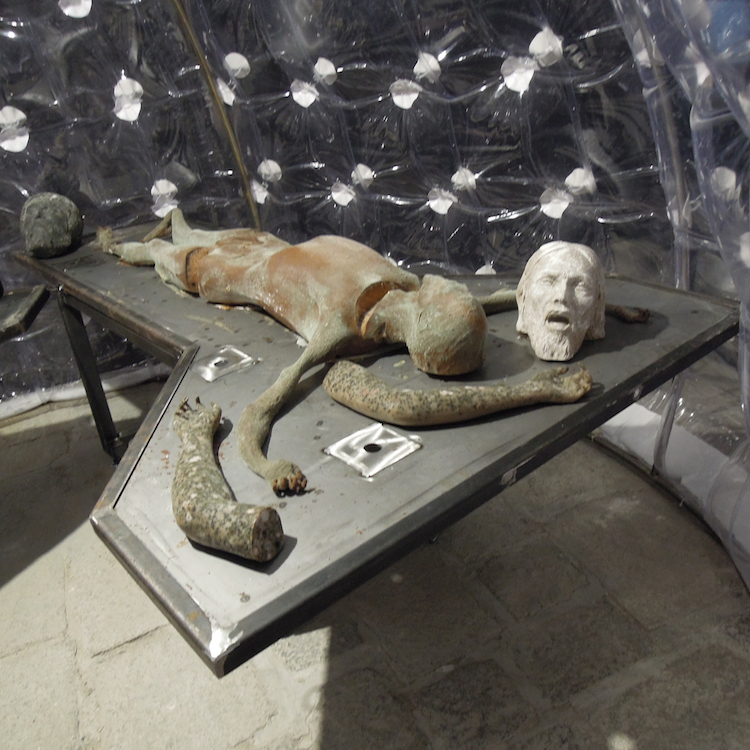VENICE, Italy — Drawing upon my youth growing up in a Missouri Synod Lutheran home, I imagine walking through this inflatable structure to be like a modern day reinterpretation of the New Testament story of Mary Magdalene and Mary, mother of James and John, entering Jesus’ tomb. Except, in this account, observers have either entered his tomb before the third day of his entombment, during which Jesus ascends to heaven – the transfiguration miracle. Or, his body never ascended at all, and observers are merely acting on voyeuristic curiosity into the decay of human flesh, especially that of a savior, prophet, celebrity—whatever you want to call it. Never the less, depictions of Jesus’ entombment and transfiguration have historically been mega-popular topics in art, but you know that.

This immersive, and slightly unsettling, exhibition is the Imitazione di Cristo (The Imitation of Christ) by Milan-based artist Roberto Cuoghi, which was presented during the month’s-long Venice Biennale of Art 2017 in the Italian Pavilion: Il Mondo Magico (May 13 – November 26, 2017). The title refers to the devotional 11th century instructional manual to Christian life of the same name.
This project fits into a complex vision that explores the transformative properties of materials and the fluid definition of identity. The artist transforms the basilica-like space of the Arsenale into a factory for churning out devotional figures inspired by the Imitation of Christ, an ascetic medieval text that the artist reinterprets from the standpoint of what he calls a “new technological materialism.” Cuoghi introduces us to an experimental process of sculpting matter, reflecting on the magical force of images, the power of repetition, and the iconographic memory of art history.
The installation – a workshop set up for producing these sculptures from start to finish, from casting the organic material in a single mold all the way to the phase of fixation – does not cease to evolve with the opening of the show: it continues to unfold through decomposition and composition, death and regeneration. The entire process has been conceived so as never to yield the same outcome, creating a sense of dissociation that seems to echo the present moment.





InExhibit writes, the entrance space of the Italian pavilion has been transformed into a sort of workshop, a factory which produced devotional statues from clay.
The statues of Christ manufactured in the workshop are then moved to an array of tables positioned inside a long tunnel made in transparent plastic, thus creating a sequence of “bodies” in progressing conditions of deterioration and crumbling of the matter.


The bodies are then fired to “end” their decay. The remains of the figures, now broken and dismembered, are re-composed and arranged on a long, dark wall at end of the gallery.








Watch a video of the installation here. (Because of privacy settings, we can’t post the video in this post – sorry!)
Do you love or loathe this installation from the worlds of contemporary ceramic art and contemporary ceramics? Let us know in the comments.

Add your valued opinion to this post.